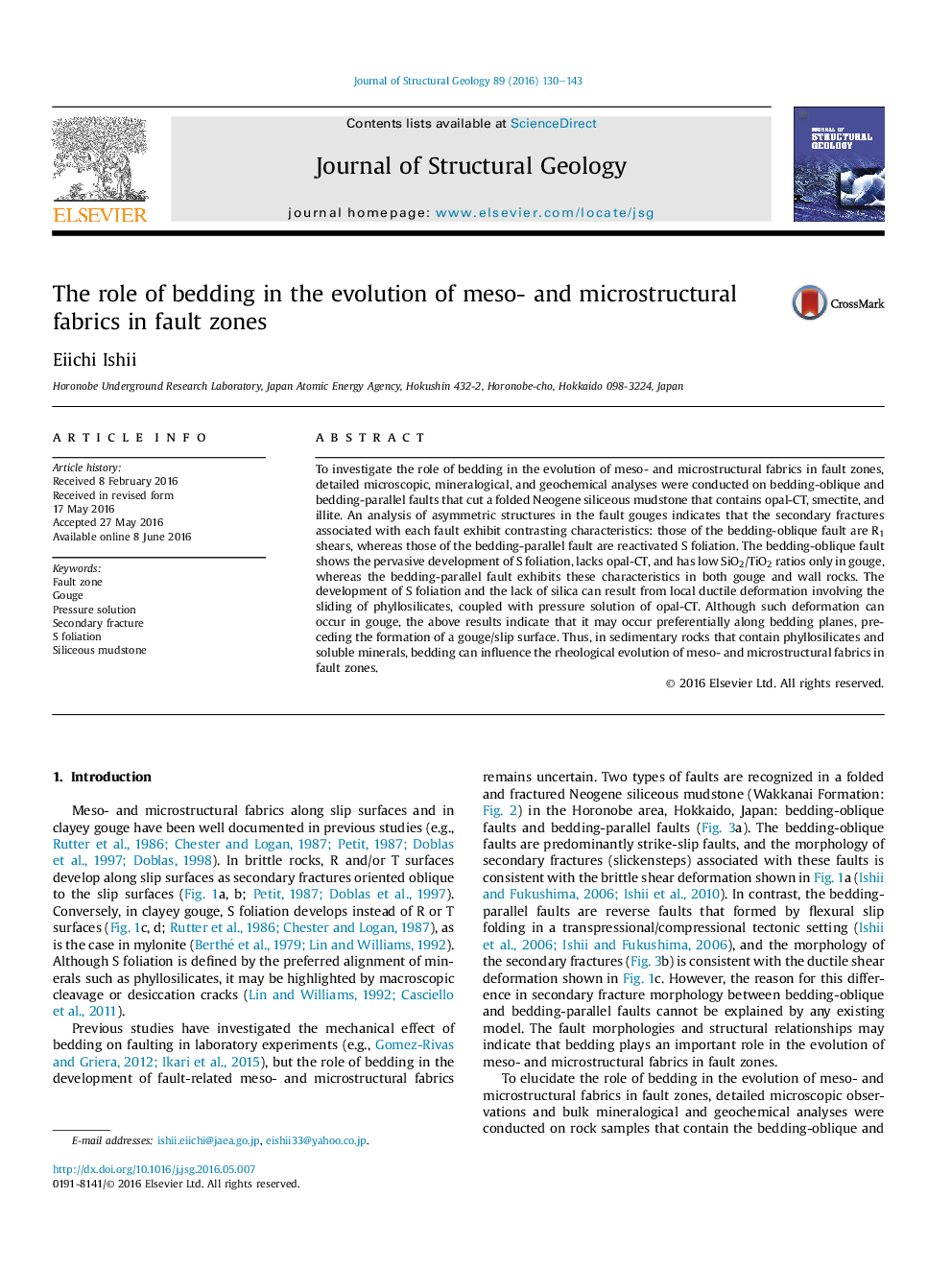| Article ID | Journal | Published Year | Pages | File Type |
|---|---|---|---|---|
| 4732951 | Journal of Structural Geology | 2016 | 14 Pages |
•Two types of secondary slickenstep fractures are observed in a siliceous mudstone.•Secondary fractures of a bedding-oblique fault are correlated with R shears.•Secondary fractures of a bedding-parallel fault are related to S foliation.•The latter results from ductile deformation related to pressure solution of opal-CT.•Bedding can influence the rheological evolution of fault zones.
To investigate the role of bedding in the evolution of meso- and microstructural fabrics in fault zones, detailed microscopic, mineralogical, and geochemical analyses were conducted on bedding-oblique and bedding-parallel faults that cut a folded Neogene siliceous mudstone that contains opal-CT, smectite, and illite. An analysis of asymmetric structures in the fault gouges indicates that the secondary fractures associated with each fault exhibit contrasting characteristics: those of the bedding-oblique fault are R1 shears, whereas those of the bedding-parallel fault are reactivated S foliation. The bedding-oblique fault shows the pervasive development of S foliation, lacks opal-CT, and has low SiO2/TiO2 ratios only in gouge, whereas the bedding-parallel fault exhibits these characteristics in both gouge and wall rocks. The development of S foliation and the lack of silica can result from local ductile deformation involving the sliding of phyllosilicates, coupled with pressure solution of opal-CT. Although such deformation can occur in gouge, the above results indicate that it may occur preferentially along bedding planes, preceding the formation of a gouge/slip surface. Thus, in sedimentary rocks that contain phyllosilicates and soluble minerals, bedding can influence the rheological evolution of meso- and microstructural fabrics in fault zones.
